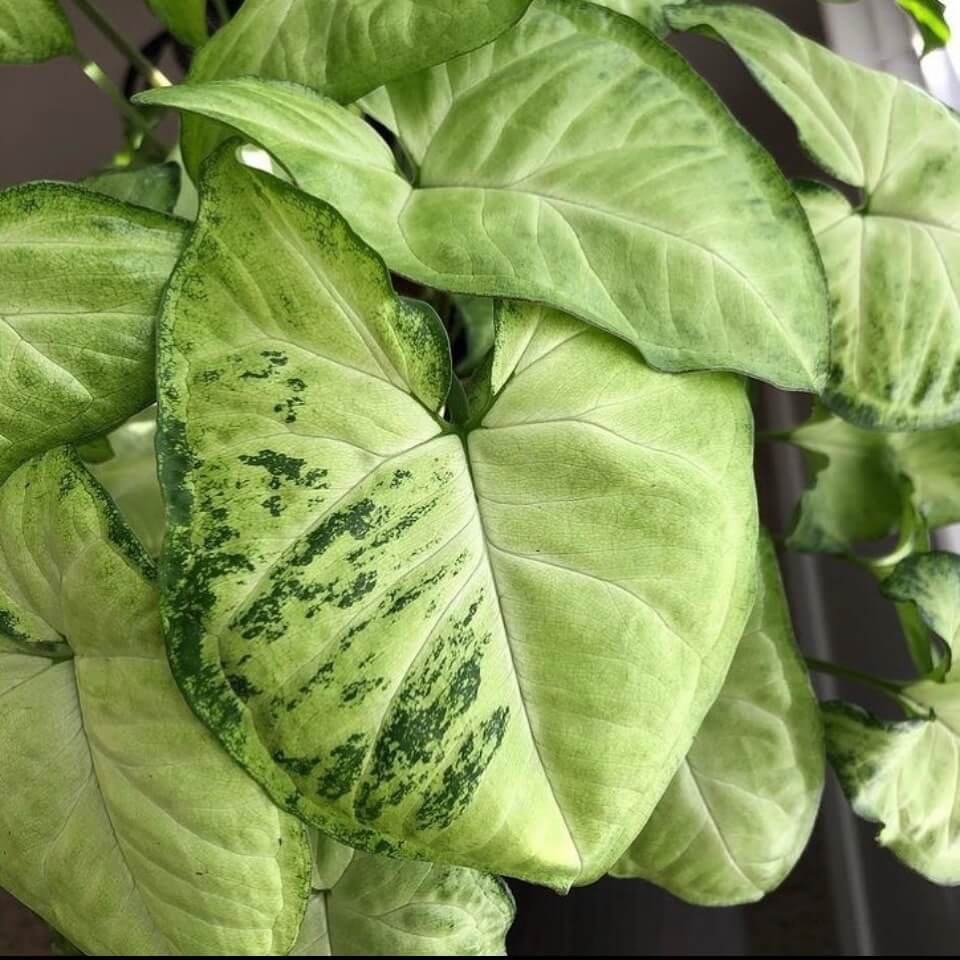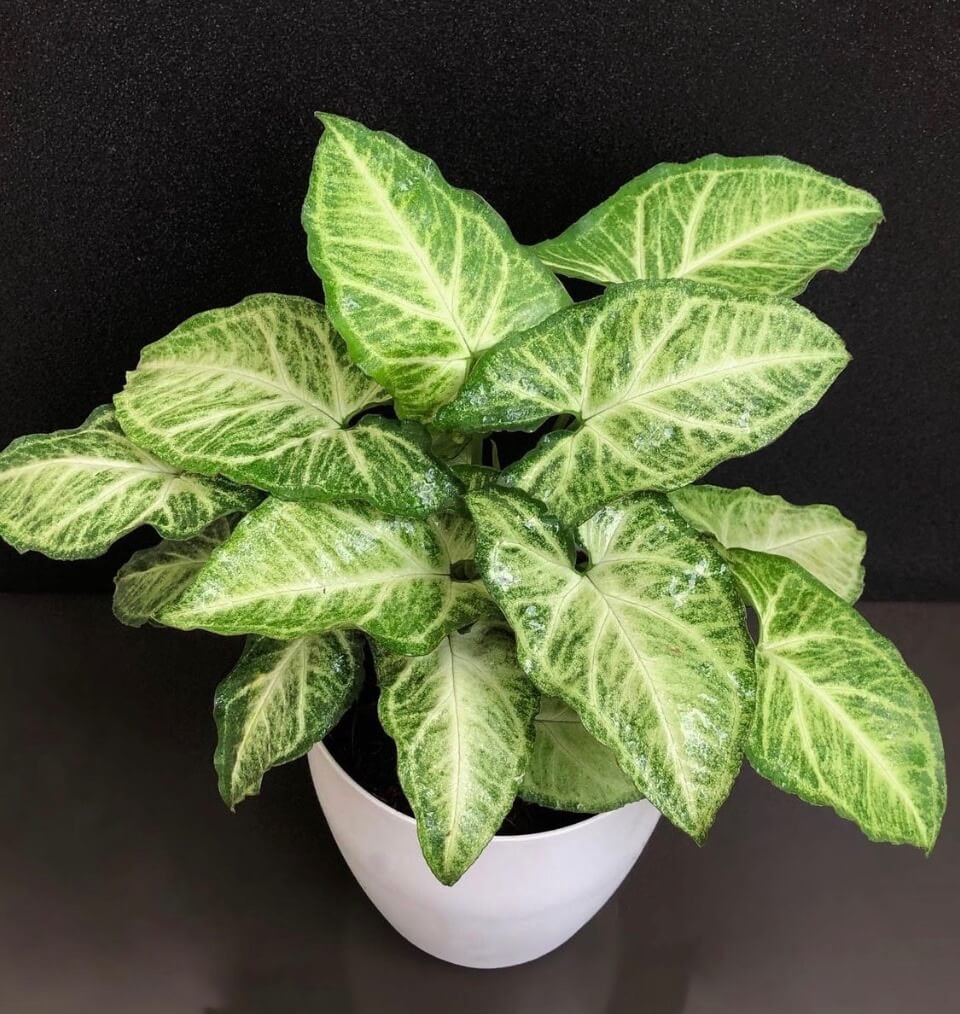Arrowhead Plant Care Guide
arrowhead plant, syngonium
About Arrowhead Plants
Arrowhead plants, also known as syngonium, are recognized by their distinctive arrow-shaped leaves, which can be found in a range of colors. These popular plants, sometimes called arrowhead vines, goosefoot plants, or nephthytis, are known for their ability to transform into vines as they mature. In this article, you'll find expert tips and tricks for caring for your arrowhead plant to help it thrive.
Basic Care Instructions and Requirements
-
Arrowhead Plant
-
Syngonium Podophyllum
-
Alismataceae, Arums
-
Perennial
-
Great For Beginners
-
3-6 ft. tall
-
Bright, Indirect Light
-
Chunky, well draining soil composed of orchid bark, potting mix, and perlite. pH 5.5-6.5
-
Green/white flowers (very rare)
-
10-11 (USDA)
-
tropical rainforests in wet muddy banks.
-
Toxic to Pets and Humans
Arrowhead Plant Types
There are around 120 different varieties of syngonium plants in the Alismataceae family. One of the most common arrowhead vines include the podophyllum, native to Mexico, Panama, and Costa Rica. One of the rarest includes the pink splash and strawberry ice syngonium plants.
Pink Splash Syngonium
Obviously if you like pink, the pink splash arrowhead plant is one of the prettiest of them all. The leaves are elongated with spear tips with bright green and vivid pink splashes.
Chiapense Syngonium
The chiapense arrowhead plant grows fast. This variation of syngonium has toned arrowhead shaped leaves with consistent colors of dark green throughout.
Podophyllum Syngonium
The most common variation of syngonium. The coloration of white and green throughout the leaves makes this arrowhead plant an attractive one.
Sunlight
Syngoniums thrive best when exposed to bright indirect light. Although not optimal, arrowhead plants do have the capabilities to survive in environments with less light. But direct light can do critical damage to your synonymous leaves causing death or disease. It’s best to place your arrowhead plant near a south facing window but far enough so that it doesn’t receive intense direct light from the sun.
Humidity
It is critical that you care for your syngonium plants humidity needs. Arrowhead plants thrive best in environments that have a humidity level over 60%. To help with this, place your arrowhead houseplant on a pebble tray with water. The purpose of the pebble tray is to allow evaporation from the tray to get to the leaves of your plant. Another way to maintain humidity levels for your arrowhead plant is to purchase a humidifier that will help you have accurate control over your plant rooms climate.
Temperature
Arrowhead plants prefer the temperature to be between 65°F-75°F. It is known to survive outdoors in hardiness zones 10-11. If you do live in an area where temperatures drop below 40 degrees, keep in mind that the arrowhead plant prefers to be at room temperature.
If you keep your arrowhead plant outdoors during the summer months, gradually start bringing your syngonium plant indoors a few weeks before first frost. Once indoors place your arrowhead vine near a south facing window where it will be exposed to bright indirect sunlight throughout the colder months.
Watering
Make sure that the pot you are keeping your arrowhead plant in has drainage holes to allow water to escape. Ideally, you should water your arrowhead plant when the top inch of soil feels dry.
Propagation
Propagating houseplants can be a incredibly stressful task when it comes to the plants you love. It doesn’t have to be hard, just follow these four steps and video tutorial to clone your favorite arrowhead plants with no time wasted.
Step One: Mix sphagnum moss and pumice and hydrate, hydrate, hydrate! *Keep your potting mix moist at all times.
Step Two: Find a node on any arrowhead plant and cut with clean scissors right below the node.
Step Three: Wrap the syngonium nodes in the moist mixture or sphagnum moss and pumice that you mixed earlier.
Step Four: Place in a clear container and watch/wait for the roots to grow!
Best Soil For Arrowhead Plants
Arrowheads thrives best in a well-draining mix that is slightly on the acidic side. A good soil combination for arrowhead plants might include a mix of potting soil, perlite or pumice, and possibly some compost or peat moss to add some organic matter and help retain moisture. The ideal pH range for arrowhead plants is slightly acidic, around 6.0 to 6.5, although they can tolerate a range of pH levels from 5.0 to 7.0.
-
Yes, arrowhead plants are great for indoors if you have the ability to control the humidity requirements needed for optimal success. Do not place your arrowhead plant directly near a window as it can burn the leaves if there is too much direct sunlight. Syngonium are most comfortable at room temperature.
-
Yes, arrowheads can live outdoors. Do not place your syngonium in direct sunlight. Make sure that if you bring outside that you place your plant near shade. If you live in an area that experiences colder climates bring your arrowhead plant indoors before first frost.
Susceptible Pests & Diseases
Arrowheads are susceptible to many pests and diseases, some of which include the following:
Leaf Spot
Stem Rot
Frequently Asked Questions
-
According to the ASPCA, arrowhead plants are very poisonous to Dogs, Cats, and Humans. Digestion may cause oral irritation, swelling of the mouth and tongue, excessive drooling, difficulty swallowing, and vomiting. If ingestion occurs be sure to visit the ASPCA website and contact your vet or doctor immediately.
-
Some studies claim that arrowhead plants have the ability to reduce potent airborne microbes like xylene, toluene, formaldehyde, and benzene.
-
The most common reason for yellowing leaves among arrowhead plants is the lack of moisture. Always make sure that you are thoroughly watering your plant when the top two inches of soil begin to dry out. Always remove yellowing leaves to prevent diseases and other issues.
-
The most common reason that arrowhead plant leaves begin to curl is due to low light. Low light environments can be detrimental to the health of your plant. If your leaves begin to curl, remove any dead leaves with a clean pair of shears, and place the plant closer to the window. If curling continues, consider investing in grow lights to supplement for the lack of light.






